Many neopagans and modern Goddess worshipers mistakenly equate the triadic nature of some Celtic Goddesses with the Triple Goddess concept first popularized by Robert Graves in his book, The White Goddess. Graves stated that Goddesses were frequently found in triplets as Maiden, Mother and Crone. But there is nothing found in the ancient stories of Celtic Goddesses to indicate that the Triple Goddesses were known as Maiden, Mother and Crone.

From the Great Unknown, oil on canvas, 34″x36″ by Judith Shaw
Quite the contrary — the Celts had a number of triadic Goddesses and Gods, but they did not represent stages of life. Instead these triple deities were seen to represent the mysterious nature of the cosmos. They expressed and ruled over the more mystical aspects and truths of life rather than the mundane and practical aspects ruled over by the deities connected to geographical locations.
Celtic mythology reveals an understanding of the mysterious quality of the universe. Recognizing the existence of a deeper reality just beyond our everyday physical reality, they saw the limit to human consciousness. They perceived that ultimately human consciousness encounters the unknown and the unknowable.
The Celtic imagination was filled with the number three as a sacred number – the three-fold Celtic spiral know as the Triskel, the Triadic, a verse in three parts used to pass on knowledge and wisdom, and the three loops comprising the Celtic knot to name a few.
Three has a special place in many world cultures. Three is the first number that moves beyond the one of individuality and the two of duality. Three takes our minds beyond duality into a unity of otherness. Four brings us back to earth as it represents the four cardinal points. In addition beyond three we are able to divide the numbers into various groups, groups which are part of the duality of life. Therefore three is the number of the great mystery which will be forever beyond human comprehension. In viewing their Goddesses and Gods with three names or three aspects the Celts were alluding to this great unknown from which we come and to which we return.
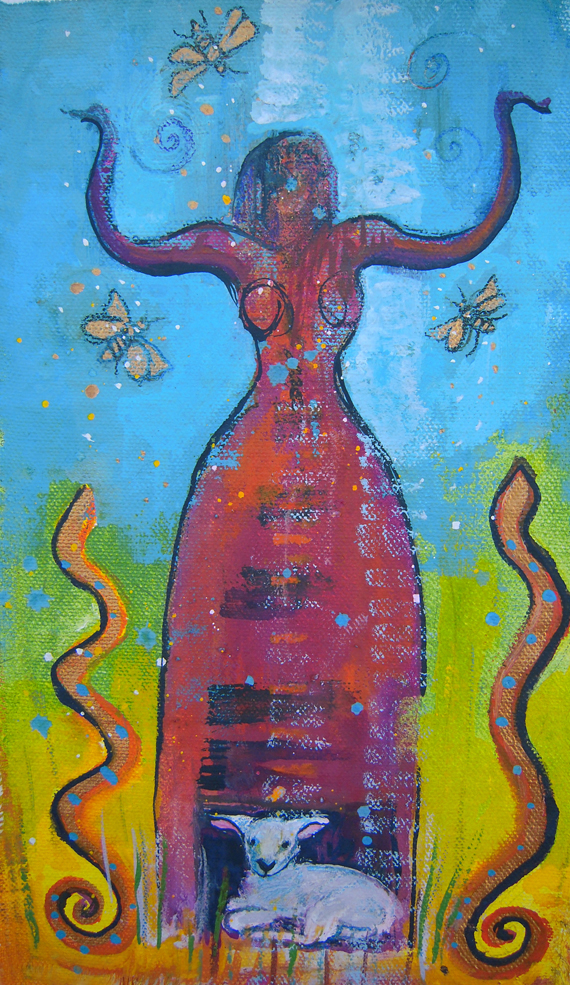
Brigid, an ancient, beloved Celtic Goddess, is the most well-known of the Triple Goddesses. She was worshipped from Ireland all the way to Gaul. According to the 10th century research of Cormac’s Glossary, three Brigids existed, all sisters. This is in accord with the three aspects of life over which Brigid reigns – as poetess, as smith, and as healer. Her multiplicity does not imply different stages of human life. It implies that she was a master of many arts, all important to our well-being.
From the first century AD we find the earliest depictions of the Triple Goddess in Celtic art. These are the reliefs of three well-dressed women known as The Matronae, or the Mothers. Some of the figures appear to be married as seen by their head attire and some are not. They represent a Triple Goddess of Abundance as they are all holding flowers, fruit, wheat – the things of human sustenance. They are often given a secondary name beyond Matronae, a name which represents the local goddess of the land or a river.
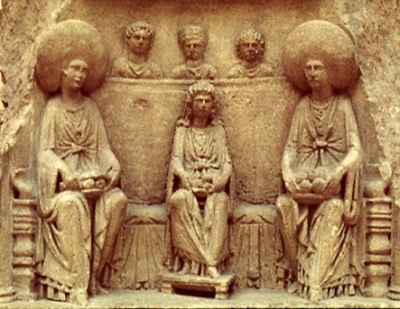
And there are other sets of important Triple Goddesses. One of these sets deals with the physicality of our lives on earth, another triplicity presides over inspiration and creativity, and yet another deals with life and death.


The first is Anu – Danu – Tailtiu, a Triple Goddess of sustenance and abundance, of movement and change, and of strength and endurance. Though there is much disagreement among Celtic scholars as to whether or not Danu even existed or what Anu’s real name was or if in fact Anu was another name for the Morrigan, still reverence to their wisdom persists today.
The second triad places Brigid, who herself is a Triple Goddess, within a triplicity. Boann – Brigid – Cerridwen are the Triple Goddess of Creativity, Inspiration and Vision. This Triple Goddess governs our experiences of creative expression as we face life’s challenges.
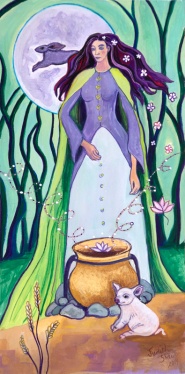
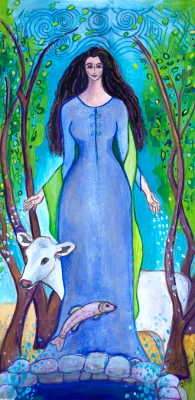
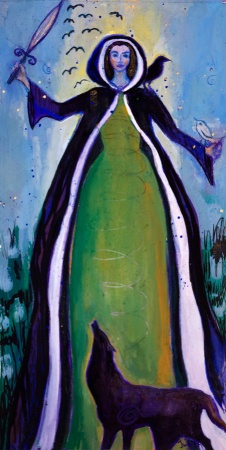
The Morrigan can be seen as another Triple Goddess which includes Neaim, Badh, and Macha. These three aspects of The Morrigan guide us in aspects of fate and sovereignty, death and war, and rebirth. The Morrigan is a very difficult goddess to pin down. The multitude of different names and interpretations of The Morrigan can leave one’s head spinning in confusion. Yet her place as an important Triple Goddess, expressing the enduring mystery of life and death cannot be denied.
The Celtic propensity for viewing their most mysterious Goddesses in triplicate form indicates a belief that the many come from the One Source, simultaneously expressing oneness and individuality. The Celt’s Triple Goddesses guide us on our paths through the various aspects of life on Earth, while opening our hearts to the numinous beyond.
Judith’s art — originals, prints, oracle decks and books are available on her website: judithshawart.com


Thank you, Judith, not only for your wonderful paintings, but for bringing awareness of this radiant quality of Celtic thought that life and the universe are not this or that, but all at once and all dynamic and changing. I hadn’t thought of these goddesses that way, and now I have a lot to think about today!
LikeLike
Carolyn,
Yeah, delving more deeply into Celtic thoughts and beliefs reveals a side of their goddesses and gods not immediately apparent. I too love seeing our universe as multi-dimensional and ever changing.
LikeLike
You paintings are beautiful Judith, I feel it would be powerful healing to be connecting with Goddesses through art. Through the practice of TM which is about connecting with the unified field, pure awareness God, I discovered consciousness in that everything is God, now I know the unified field is not what we need to get to, it’s where we exist, nothing is separate. Yeah, that is my take we are individuated and we are one. i do not agree with the maiden, mother, crone and it’s limitations, where is the sage?
LikeLike
Cate,
Your words “the unified field is not what we need to get to, it’s where we exist, nothing is separate.” ring true to me. I’ve come to see the concept of the maiden, mother and crone as a patriarchal thought that denigrates the concept of Goddess and the Sacred Feminine. To me it reduces Goddess and in turn women to our biology. There is not a counterpart for Gods being seen in their biological seasons of life, which men most certainly have too. I know that many don’t agree with that but that’s how I see it.
LikeLike
I see the same thing Judith maiden, mother, crone, is a patriarchal thought that limits girls and women to our biology, interesting how sage and…….is not there. The good news is that e can open up this conversation now and change what does not fit us. Now, girls and women are making herstory, bout time!
LikeLike